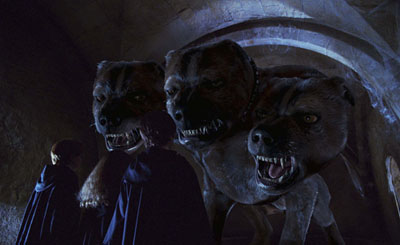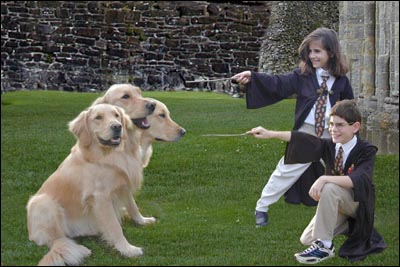
Team 40 and Fluffy
6.270, MIT's Autonomous Robot Design Competition, is an entirely student-run competition in which approximately fifty teams of students spend one month designing, building, and programming their own completely autonomous robots. The goal of each team in this year's contest was to win the most number of goals (a maximum of three) by moving more of their own balls into each goal than the other team. To this end, our team originally sought to implement a strategy by which we could move four balls into a corner goal and trap the other two inside the robot, which would proceed to sit inside the center goal and expand itself to take up the entire 1.5' x 1.5' square.

Nabila Agila: Our favorite Ecuadorian, possibly majoring in mechanical engineering or EECS, loves tractors and crew, did all kinds of work on Fluffy.

Andrew Mendelson: The biology senior and code samurai. Spent time on strategy, or when that failed, strategery.

Sulinya Ramanan: Possibly courses 6 and 15, and for all intensive purposes the mechanical masochist of this operation.
Although there were early advocates for the name "Scratch n' Sniff", we safely settled on the name Fluffy. At least one team member liked the reference to the resident hound of Hogwart's School.

|

|
| http://encyclopedia.quickseek.com/images/Fluffy-PS.jpg | http://www.soasoas.com/harryPotter/smallFluffy.jpg |
As stated before, our original intention was to trap two balls into the robot's gate, go back to the starting position, push the four balls into the corner box, and proceed to the center to expand and fill the entire box. We intended to use shaft encoding for moving straight and turning, and we used three light sensors in an L-shape to determine the robot's initial orientation. Since the color combinations determined in this manner were unique, this worked fairly well. Nonetheless, we spent considerable time debugging this system. Position from the ground, the relative orientation of the LED and the phototransistor, and shielding most likely caused these issues, even though we made every effort to rectify them. Although we securely mounted the shaft encoders, there was still slipping between the gears that caused error in the shaft encoding.
Our intention was to make two separate halves of the robot that could each drive in opposite directions in order to fill up space, and have walls that came out of the other two sides, completing the 1.5' x 1.5' square. We built all of the four gearboxes in the same manner with a 1:135 gear ratio, and because of size constraints, we had to eliminate external bracing of the wheels and use twelve- FLU beams for constructing them. As far as possible, the motors needed to stay securely in place, and in order to eliminate friction, we found that the best way for this to happen was for the motor to be mounted level with the neighboring gear. Furthermore, we wanted a motor-driven ball gate that drew balls in through its rotation, but that required at least an inch and a half to two inches of clearance inside it. After weeks of deliberation about the physical structure of the robot, we had successfully completed building each half of the robot with tracks along the bottom center for the halves to separate; however, realizing that we had approximately three days left for having a working robot, we proceeded onto more urgent tasks.
Over the next few days, the lab became our home. Because shaft encoding turned out to be so unreliable, we decided to use code to determine the speed of each gear needed to move the robot in a straight line and for turning ninety degrees. With any luck, we would be able to have the robot push balls into each of the corner goals. Tuesday night/ Wednesday early morning found the robot moving twelve feet in a straight line and turning perfect ninety-degree turns. We expected the robot would be able to execute simple commands fairly effectively, and the robot was set aside for some time while the batteries were left to charge. Two hours later, we returned to the lab expecting to find Fluffy turning at right angles. Alas, the friction in the gearboxes had mysteriously multiplied and Fluffy moved between thirty and sixty degrees. Desperate for help, we consulted a TA Who Shall Not Be Named, who inspired a redesign of our drive wheel mounts with 3 hours remaining before impounding. We were able to qualify our robot first and then promptly begain major robot surgery. Two hours later when the back of the robot was completely taken apart, the front had broken on its own, and a makeshift gearbox was finally complete, Bin told us very seriously to hand in our robot for impounding. We desperately decided to put the robot back together in its previous state, which only half worked, and we ended up with a flimsier work of art, with generous tape and loose sensors.
Fluffy survived its journey from the lab to 26-100, and with the help of some tape, it managed to stay together during the initial rounds of the competition. Although it would have most likely scored had it not been deconstructed, Fluffy managed to move on its own and almost scored a goal. We learned that sleep-deprived judgment is impaired; however, Fluffy is scheduled to be reconstructed to its original state.